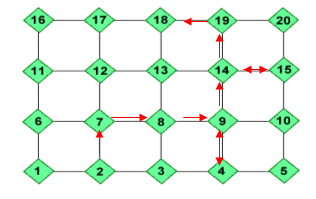Or search by topic
Number and algebra
Geometry and measure
Probability and statistics
Working mathematically
For younger learners
Advanced mathematics
Routes 1 and 5



- Problem
- Getting Started
- Student Solutions
- Teachers' Resources
Fiona from Tattingstone School tackled this very clearly:

She found another way of starting and ending on these numbers:

Fiona then explains:

Omar from the Modern English School, Cairo drew out a few different routes which also start at $2$ and end at $18$:

I like the way you've shown the 'optional extras' with double-headed arrows, Omar Abdel also from the Modern English School found another route:
$2+1+1+5-5+1+5+5-1+5-1$
Elliot, Richard and Christopher from Moorfield Junior School agreed with Fiona but also found another equally short route: $+1,+5,+5,+5$.
Molly and Callum from Bradon Forest School sent us a detailed response:
The last number in the sequence is $18$, and another Sequence is $2(+5)7(+5)12(+5)17(+1)18$.Luke from Witton Middle School noticed something important:
Well done, Luke, you're right that the order of the operations is not important - you would still get to $18$.

